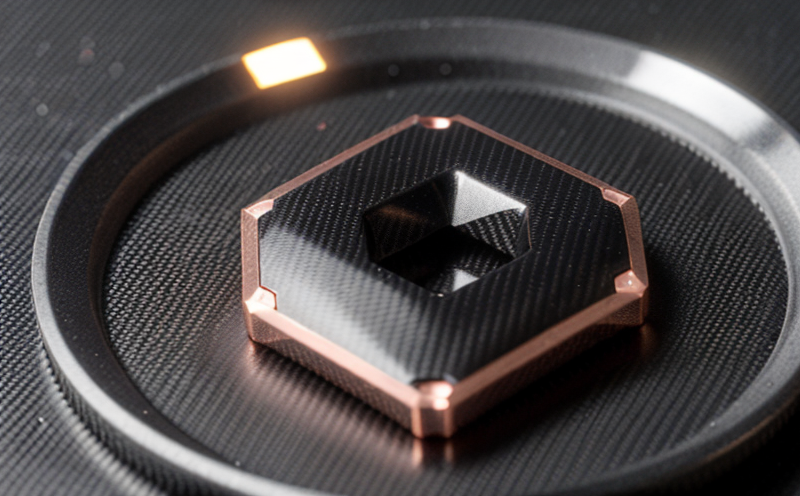ASTM D4820 Impurity Detection in Carbon Nanotube Powders
The ASTM D4820 method is a critical tool for quality assurance and control in nanomaterials testing, particularly when dealing with carbon nanotubes (CNTs) and graphene. This service ensures the purity of CNT powders by detecting impurities that could affect their performance in various applications. The process involves detailed sample preparation, careful analysis using advanced instrumentation, and meticulous reporting to meet industry standards.
The ASTM D4820 method is designed to identify trace amounts of contaminants that can be present in CNT powders. These impurities are often introduced during the synthesis or purification processes and can significantly impact the properties and performance of the final product. For instance, a trace amount of iron contamination could lead to catalytic reactions affecting the integrity of the nanotubes, while silicon oxide might interfere with electrical conductivity.
The first step in this process is thorough sample preparation. This involves dispersing the CNT powder into a suitable solvent for analysis. The choice of solvent depends on the specific type of impurity being targeted and the subsequent analytical technique used. Common solvents include nitric acid, perchloric acid, or formic acid, depending on the nature of the suspected contaminants.
Once prepared, the sample undergoes a series of analyses to detect impurities. Techniques such as inductively coupled plasma-optical emission spectrometry (ICP-OES), scanning electron microscopy (SEM), and transmission electron microscopy (TEM) are employed. ICP-OES provides elemental analysis with high sensitivity, allowing for the detection of trace metals like iron, nickel, and copper. SEM and TEM offer detailed imaging that can reveal the presence of non-CNT materials such as amorphous carbon or graphite.
The ASTM D4820 method is not only about identifying impurities; it also ensures that these contaminants are quantified accurately. Reporting standards are strictly adhered to, providing a clear and transparent account of the purity level achieved. This data is crucial for quality managers and compliance officers ensuring that products meet the required specifications.
The importance of ASTM D4820 extends beyond just detection; it plays a vital role in R&D processes as well. By identifying impurities early, researchers can refine their synthesis methods to produce more pure CNT powders. This is particularly important for applications like composite materials, electronics, and energy storage devices where even small amounts of impurities could compromise the performance.
The method’s reliability and accuracy are further enhanced by its stringent quality control measures. Regular calibration of instruments and adherence to standardized procedures ensure consistent results across multiple samples and batches. This consistency is essential for maintaining trust among stakeholders in the industry, from suppliers to end-users.
Understanding the ASTM D4820 process also requires a brief look at some key standards that guide this method. ASTM D7563, which pertains to the general test methods for carbon nanotubes, provides broader context on the quality assurance practices used in nanomaterial testing. Additionally, IEC 61967-4:2018, which focuses on color space transformations, might seem unrelated but highlights the precision required in analytical processes.
In conclusion, ASTM D4820 impurity detection is a cornerstone of ensuring high-quality carbon nanotube powders. Its application ensures that these materials are fit for purpose across various industries, from electronics to advanced composites. By adhering strictly to this method, laboratories and research institutions can deliver reliable data and enhance the overall quality of their products.
Applied Standards
| Standard Code | Description |
|---|---|
| ASTM D4820-19 | Standard Practice for Impurity Detection in Carbon Nanotube Powders |
| IEC 61967-4:2018 | Color Space Transformations, Part 4: CIELAB to Other Color Spaces |
| ASTM D7563-19 | Standard Practice for Carbon Nanotube Characterization and Quality Control |
Quality and Reliability Assurance
- Meticulous sample preparation to ensure accurate analysis.
- Use of advanced instrumentation like ICP-OES, SEM, and TEM for precise detection.
- Strict adherence to ASTM D4820-19 standards.
- Regular calibration of instruments to maintain accuracy.
- In-depth reporting of results with detailed traceability.
The reliability of the ASTM D4820 method is underpinned by a robust quality assurance framework. This includes not only the technical aspects but also the procedural and administrative processes that ensure every step in the analysis is conducted accurately and consistently. Regular audits and peer reviews further enhance this reliability, ensuring that no aspect of the process is overlooked.
The precision and accuracy of ASTM D4820 impurity detection are critical for maintaining the integrity of carbon nanotube powders across various applications. By adhering to strict quality control measures, laboratories can ensure that their results are trustworthy and reproducible. This reliability is essential for industries relying on high-quality nanomaterials, from electronics manufacturers to composite material producers.
Use Cases and Application Examples
- In the production of advanced composites where purity ensures mechanical strength and durability.
- In electronics manufacturing to enhance conductivity without introducing unwanted reactions.
- In energy storage devices like batteries, where impurities can affect performance and longevity.
- During research and development phases to refine synthesis methods for higher quality CNT powders.
The ASTM D4820 method finds extensive use in several sectors due to its critical role in ensuring the purity of carbon nanotube powders. In advanced composites, the absence of impurities ensures superior mechanical properties and longevity. For electronics manufacturers, it guarantees that the CNTs used do not introduce unwanted reactions or degrade performance. In energy storage devices, purity is crucial for optimizing efficiency and extending the life span.
During R&D phases, this method plays a pivotal role in refining synthesis processes to produce higher quality CNT powders. By identifying impurities early on, researchers can make necessary adjustments to improve product quality. This not only enhances the performance of final products but also contributes to sustainability by reducing waste and improving efficiency.
Real-world applications of ASTM D4820 include its use in industries such as aerospace, automotive, and energy storage. In these sectors, the method ensures that CNT powders meet the stringent quality standards required for their specific applications. For instance, in aerospace, high purity is essential to ensure the reliability and safety of composite materials used in aircraft structures.





